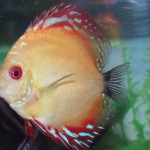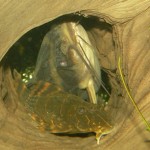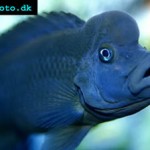Scientific Name: Apistogramma cacatuoides
Breeding Method: Cave spawner
Ease of Breeding: Easy
Introduction: These South American cichlids are named for the spectacular crest formed by their dorsal fins. They can be bred in pairs or in a species tank.
Sex Differences: Males are more colorful, and the rays of their dorsal fins are longer.
Water Conditions: Not critical; while many breeders use soft, acidic water, there are reports of cockatoo cichlids spawning in water as high as 7.8; hatches may be smaller in very alkaline water, however. Temperatures should be around 76°F; lower temperatures result in a higher percentage of females, and higher temperatures result in more males.
Equipment: Use a 10-gallon tank for a breeding pair, or a 20-gallon long tank for one male and five or six females. Some breeders add a layer of gravel, but others prefer to leave the tank bottom bare. Add a heater, a sponge filter, and a number of upturned flowerpots or half coconut shells with “doors” drilled into the sides; also add plenty of plants (in pots if you are not using substrate). Java moss is a good choice, since it will give fry places to hide.
Conditioning and Triggers: Condition the sexes together or separately on live foods such as brine shrimp, blood worms, and tubifex for a week or two before spawning.
Spawning: The colors of both males and females grow more vivid when they are in condition to spawn. A female stakes out one of the “caves” in the tank as her territory; the male shimmies and display his fins to her. When ready to spawn, she flips on her side and turns her belly toward him, pressing close to the spawning surface as she releases her eggs. When spawning is completed, she will drive the male out of the cave and guard the eggs. Some breeders recommend removing the male at this point, because his presence may stress her, but others say that the process of removing him is equally stressful and may cause her to eat her eggs.
Brood Size: Up to 80.
Fry Care: Eggs will hatch in about three days, and become free swimming about a week after that. At this point, expect the mother to reappear with babies in tow. Feed fry three times a day with infusoria and live brine shrimp, introducing other small foods as the fry grow.
















